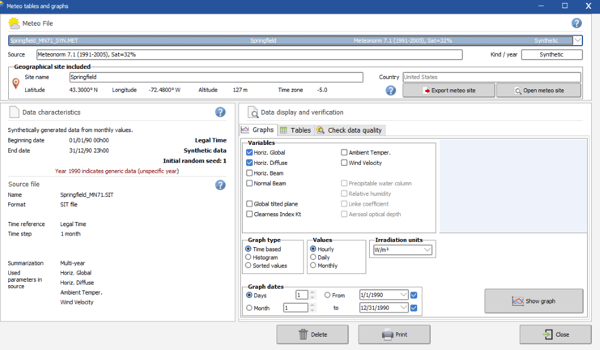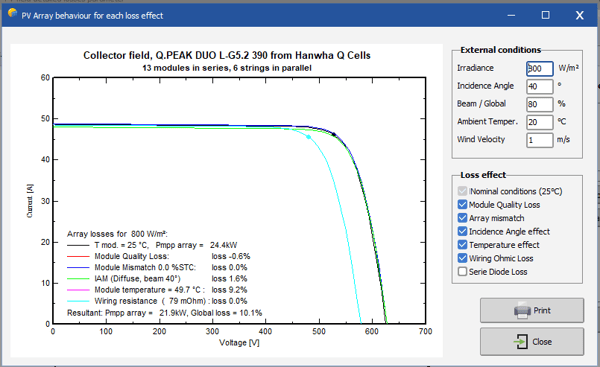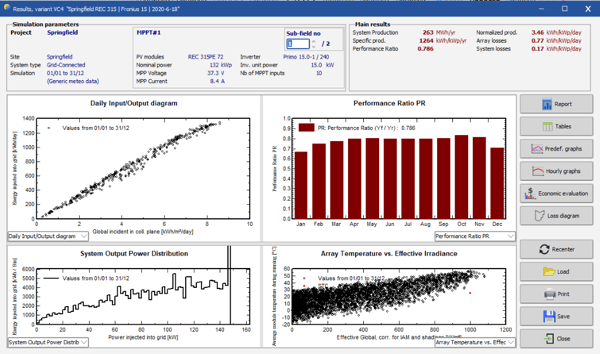New Energy Insights
- Home /
- New Energy Insights /
- The Importance of Production Modeling
Investors and energy users make long term financial decisions when buying into a Photovoltaic (PV) Solar Project. Power Purchase Agreements (PPAs) define the purchase price per kWh of energy and usually have a term of 25 years or longer. That is 25 years of expected revenue and, in the case of a host/client, 25 years of known electricity cost.
There are several components of solar project financial modeling. Some are short-to-near-term like tax benefits and depreciation which can be realized quickly. Others are long-term such as the assumed avoided utility costs over the life of the system and the amount of energy the system will produce.
New Energy Equity (NEE) has an extremely talented team that excels at modeling each of these various factors. Today, we discuss what our engineering team gets particularly excited about: system production.
So, what goes into a production model? Two key things each with several defining factors: historical weather models and system design.
HISTORICAL WEATHER MODELS
To assess the long-term electrical output of a solar power plant we need to fundamentally understand not just the anticipated solar availability in a particular region, but historical and anticipated weather. There are a variety of datasets available publicly and commercially with detailed historical weather. Some of these datasets use satellite technology while others use data gathered from instruments on the ground. All of them come from nationally and internationally recognized groups. These datasets form what is known as a Typical Meteorological Year (TMY). To determine which dataset to use, one must consider project location and any outlying comparable datasets. Some datasets are more accurate and offer less variability in certain parts of North America, while others offer more granularity into certain micro-climates.

Example of an imported Typical Meteorological Year Dataset
One must also consider annual snowfall. NEE has systems in upstate New York, Vermont, Minnesota, etc., that can experience significant snowfall. We use historical data from NOAA stretching back 30+ years that shows us average monthly snowfall amounts. But how do we use this information as it relates to the ultimate question: what a PV system will produce? We factor in things like monthly snowfall frequency and intensity, the tilt of panels, relative humidity, available irradiance, temperature, subsequent melting effect, the coefficient of friction of the glass panels, and more. This allows us to estimate when the solar panels will produce energy and when (and how long) they will be covered in snow over a 20-year period.
SYSTEM DESIGN
System Design covers hundreds of parameters, each unique to a particular solar project. The engineering team starts by making an electrical model of the array consisting of defining the types of equipment (solar panels and inverters) used and their particular electrical specifications. We configure how they are connected to each other and if there are transient electrical losses like auxiliary power or transformers in the configuration. Each different type of solar panel has inherent properties specific to that panel and react to the environment differently.
We then make a 3D model of the solar array, inclusive of any near shadings such as trees or roof obstructions. We also take into consideration the far horizon. If an array is in a low-laying valley and there is a mountain nearby, we will not get sun on a clear horizon each morning. This 3D model is placed into a modeling program that simulates how much sun the panel surfaces receives every hour of an entire Typical Meteorological Year.

Example of PVSyst estimating array losses due to several key factors
The magic happens after the model is geo-located into the simulation program and the simulation begins. The results are derived from multiple linear regression analyses made by powerful computational software. The industry standard software used by professionals throughout the world is called PVSyst. Every team member at New Energy Equity is extremely well versed in the intricate use of this program, as well as a host of other programs, that are all used to contrast and compare different simulations. The final result: the best—and more importantly most accurate production model.

Pre-report analysis of a completed PV System simulation run
Preparing a production model can be complicated but NEE's engineering team specializes in each step of the process, having mastered these complex tools in an effort to contribute to the financial success of our projects and to give our customers accurate and detailed energy estimates. One of New Energy Equity’s core values is to be at the “Top of our Game,” meaning we're dedicated to driving innovation and success in the industry. Seamless production modeling is just one of many important processes that is crucial to successful PV project development.
How Can New Energy Equity Help You Reach Your Solar Goals?
Stay up-to-date with New Energy Equity by joining our mailing list.


